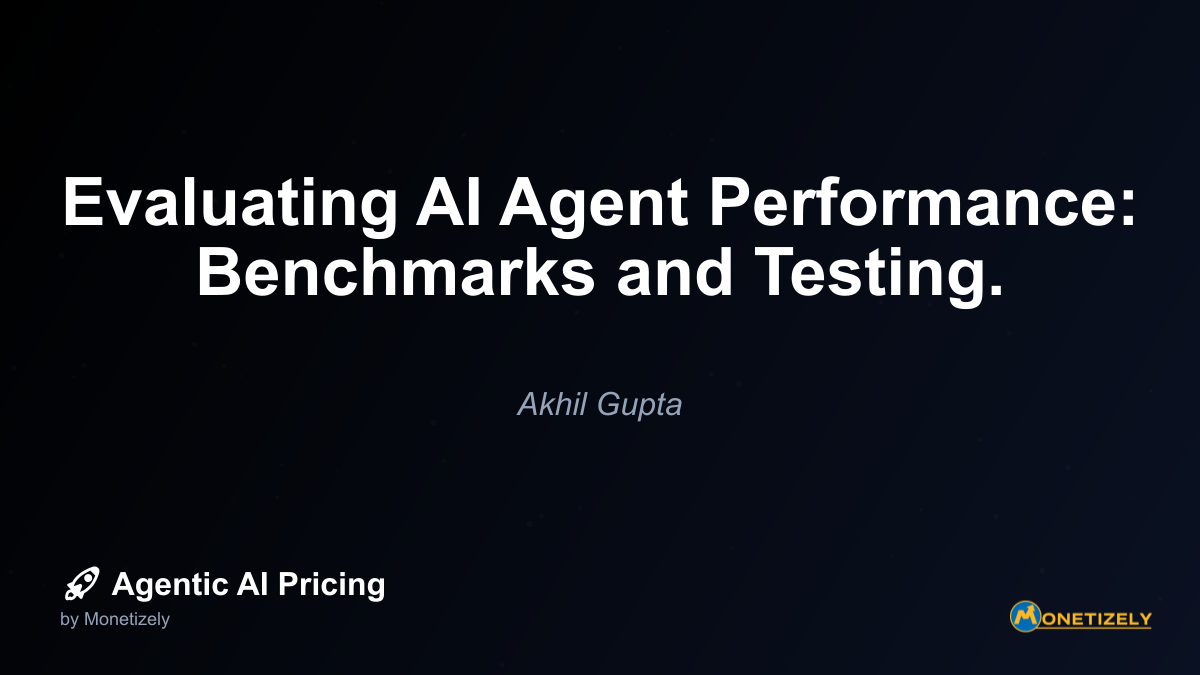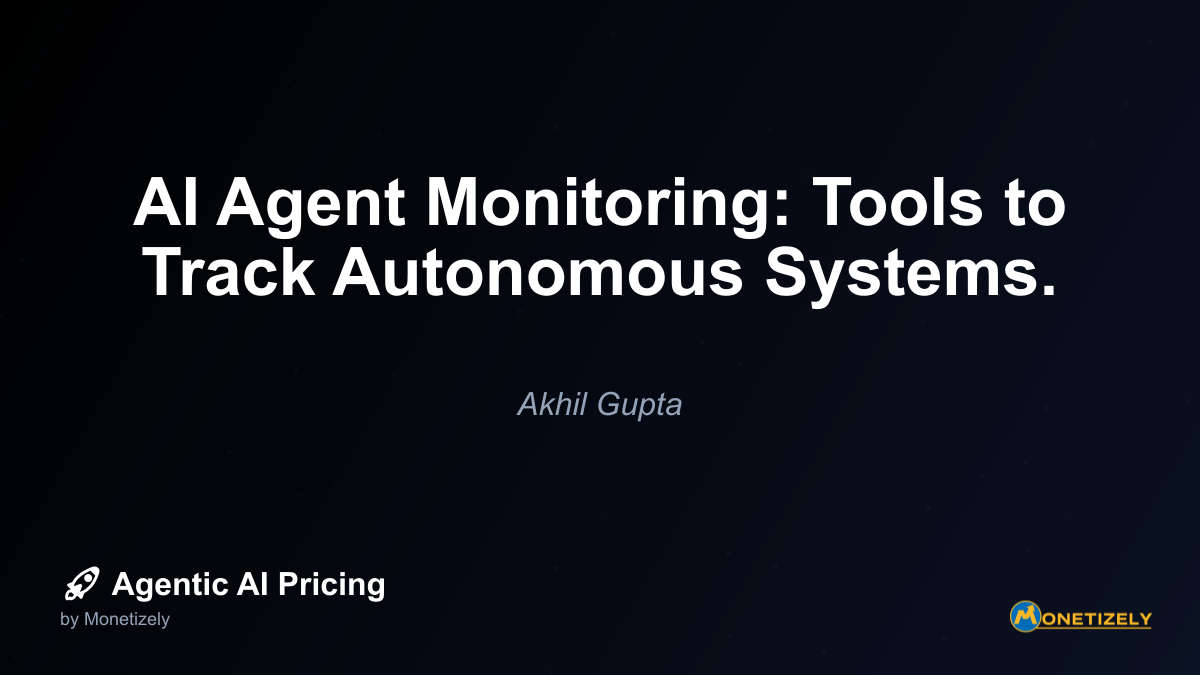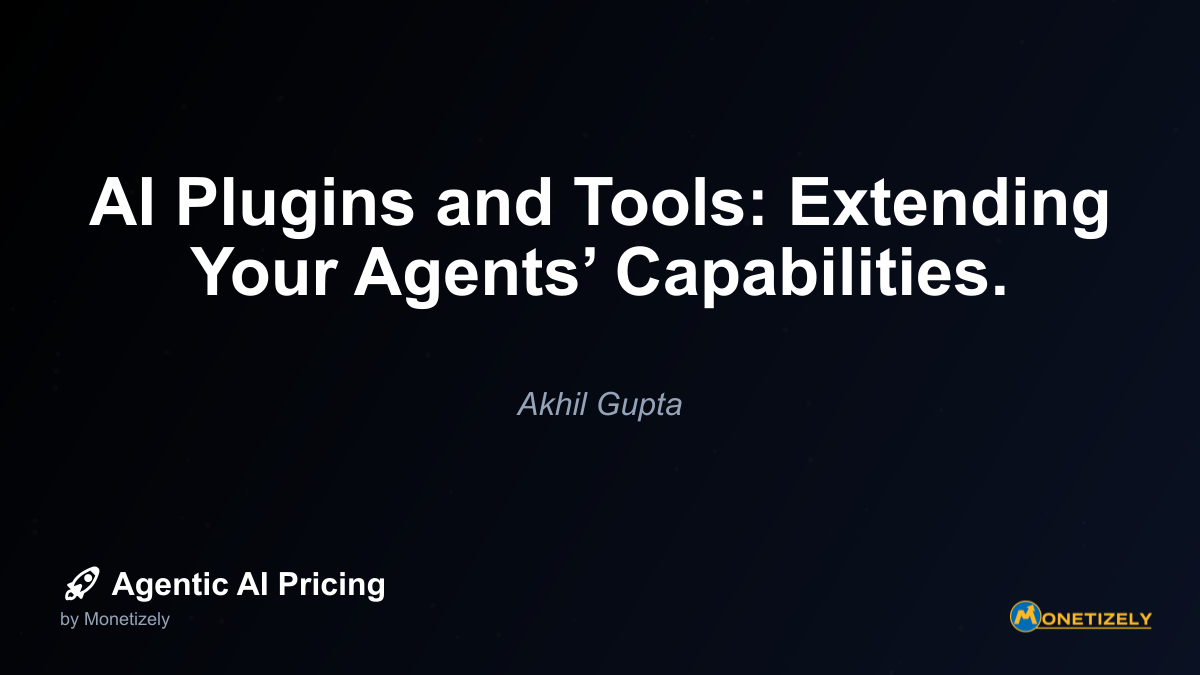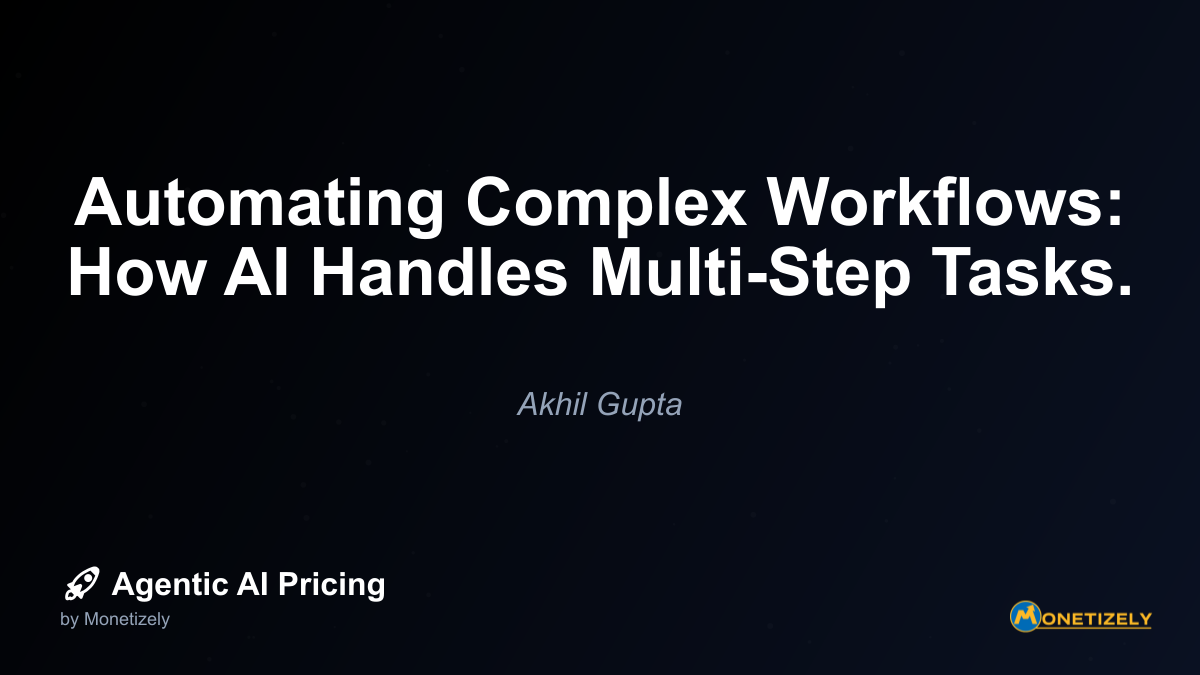· Akhil Gupta · Technical Insights · 9 min read
Evaluating AI Agent Performance: Benchmarks and Testing.
AI and SaaS Pricing Masterclass
Learn the art of strategic pricing directly from industry experts. Our comprehensive course provides frameworks and methodologies for optimizing your pricing strategy in the evolving AI landscape. Earn a professional certification that can be imported directly to your LinkedIn profile.

In today’s rapidly evolving AI landscape, businesses implementing agent-based systems face a critical challenge: how do you know if your AI agent is actually performing well? Unlike traditional software with deterministic outputs, AI agents operate with degrees of variability that can make evaluation complex and nuanced. This complexity only increases as AI systems become more autonomous and handle increasingly sophisticated tasks across customer service, decision support, and operational workflows.
Effective evaluation frameworks aren’t just technical necessities—they’re business imperatives. An underperforming AI agent can damage customer relationships, introduce operational inefficiencies, or even create compliance risks. Conversely, properly validated AI systems can deliver transformative value while maintaining appropriate guardrails.
This guide explores the comprehensive approach to AI agent evaluation, covering pre-deployment benchmarking, structured pilot testing, and ongoing performance monitoring. We’ll examine both quantitative metrics and qualitative assessment frameworks that help ensure your AI investments deliver their intended value.
Why Traditional Software Testing Approaches Fall Short
Traditional software testing methodologies operate on a simple premise: given specific inputs, the system should produce predictable, consistent outputs. QA teams write test cases with expected results, and the software either passes or fails based on those expectations.
AI agents, however, operate differently. They:
- Generate variable outputs: Even with identical inputs, an AI agent might produce different but equally valid responses.
- Improve through learning: Performance can change over time as the system adapts to new data.
- Handle ambiguity: Many tasks involve subjective judgment where there’s no single “correct” answer.
- Balance competing objectives: An agent might need to optimize for accuracy, speed, creativity, and safety simultaneously.
This fundamental difference means businesses need specialized evaluation frameworks for AI systems—ones that account for both technical performance and business value alignment.
Pre-Deployment Benchmarking: Establishing Baseline Performance
Before deploying an AI agent into production, establishing baseline performance expectations through benchmarking provides critical insights into capabilities and limitations.
Standard Benchmarking Datasets
Industry-standard benchmarks offer a starting point for evaluation across common tasks:
- Language Understanding: Datasets like GLUE (General Language Understanding Evaluation) and SuperGLUE measure comprehension, reasoning, and inference capabilities.
- Question Answering: SQuAD (Stanford Question Answering Dataset) evaluates how accurately an agent can extract answers from context.
- Reasoning: Datasets like MATH, GSM8K, and BIG-Bench test logical reasoning and problem-solving abilities.
- Domain-Specific: Specialized benchmarks exist for finance, healthcare, legal, and other sectors with unique terminology and knowledge requirements.
While these standardized benchmarks provide useful reference points, they rarely align perfectly with real-world business applications. Their primary value lies in comparative analysis—seeing how different models or approaches perform on identical tasks.
Custom Benchmark Development
For most businesses, developing custom benchmarks that reflect actual use cases delivers more actionable insights. This involves:
- Task identification: Documenting the specific tasks your AI agent will perform
- Test case creation: Developing representative examples with expected outcomes
- Edge case inclusion: Deliberately incorporating challenging scenarios
- Evaluation criteria: Defining what constitutes acceptable performance
When developing custom benchmarks, consider creating a “golden dataset”—a carefully curated collection of examples that represent the full spectrum of expected agent interactions. This dataset should include:
- Common scenarios: Everyday tasks the agent will routinely handle
- Edge cases: Unusual but important situations that test boundaries
- Adversarial examples: Deliberately challenging inputs designed to identify weaknesses
- Real user data: (Anonymized) examples from actual customer interactions when available
Quantitative Performance Metrics
Effective benchmarking requires clearly defined metrics. Common quantitative measures include:
- Accuracy: Percentage of correct responses (for tasks with definitive answers)
- Precision and recall: Balance between relevance and completeness
- F1 score: Harmonic mean of precision and recall
- Response time: Latency between query and response
- Throughput: Number of queries handled per time unit
- Error rates: Frequency of specific error types
For generative AI agents, additional metrics might include:
- Perplexity: Measure of how confidently the model predicts the next token
- BLEU/ROUGE scores: Text similarity metrics comparing generated outputs to references
- Hallucination rate: Frequency of factually incorrect statements
- Consistency: Whether responses remain logically coherent throughout interactions
Setting Performance Thresholds
Once metrics are established, determining minimum acceptable performance thresholds becomes crucial. These thresholds should balance technical capabilities with business requirements:
- Minimum viable performance: The lowest acceptable quality for deployment
- Target performance: Ideal performance level for business success
- Competitive benchmarks: Performance relative to alternative solutions
- Cost-benefit analysis: Value delivered versus resources required
Rather than setting a single threshold, consider establishing tiered performance levels that correspond to different deployment stages or use cases. For example:
- Tier 1 (90%+ accuracy): Suitable for customer-facing, high-stakes applications
- Tier 2 (80-90% accuracy): Appropriate for internal tools with human oversight
- Tier 3 (70-80% accuracy): Acceptable for low-risk, assistive applications
Pilot Evaluations: Controlled Real-World Testing
While benchmarks provide valuable data points, they cannot replace controlled testing in authentic environments. Pilot evaluations bridge the gap between theoretical performance and practical application.
Structured Pilot Design
Effective pilot programs typically follow a phased approach:
- Internal testing: Deployment to employees familiar with AI limitations
- Friendly users: Expansion to selected external users with clear expectations
- Limited release: Broader deployment with careful monitoring
- Full deployment: General availability with ongoing evaluation
Each phase should have:
- Clear objectives: Specific questions the pilot aims to answer
- Success criteria: Defined metrics that indicate readiness for the next phase
- Feedback mechanisms: Structured ways to collect user experiences
- Iteration protocols: Processes for implementing improvements
Qualitative Evaluation Frameworks
Beyond quantitative metrics, qualitative evaluation provides crucial insights into user experience and business value alignment. Effective frameworks include:
Human Evaluation Rubrics
Developing standardized rubrics helps evaluators assess subjective aspects consistently. These rubrics might include criteria like:
- Relevance: How directly does the response address the query?
- Helpfulness: Does the response solve the user’s problem?
- Accuracy: Is the information factually correct?
- Completeness: Does the response provide comprehensive information?
- Clarity: Is the information presented in an understandable way?
- Appropriateness: Does the tone and content match user expectations?
Each criterion can be rated on a defined scale (e.g., 1-5) with clear descriptions of what constitutes each level.
Comparative Evaluation
Side-by-side comparison between:
- Human vs. AI performance: How does the agent compare to human experts?
- Different AI approaches: Comparing various models or prompting strategies
- Current vs. previous versions: Tracking improvement over iterations
User Feedback Collection
Structured methods for gathering user perspectives:
- Satisfaction surveys: Quantitative ratings of agent performance
- Contextual interviews: In-depth conversations about user experiences
- Usage analytics: Behavioral data showing how users interact with the agent
- Feedback buttons: Simple mechanisms for flagging problematic responses
A/B Testing Approaches
For businesses with sufficient user volume, A/B testing provides powerful insights into relative performance. This approach involves:
- Variant creation: Developing alternative versions of the AI agent
- Random assignment: Distributing users between variants
- Metric tracking: Measuring performance differences across variants
- Statistical analysis: Determining significance of observed differences
A/B testing can compare:
- Different models: Testing various underlying AI models
- Prompt engineering approaches: Comparing instruction strategies
- Interface designs: Evaluating how presentation affects perception
- Feature sets: Assessing which capabilities deliver the most value
Post-Deployment Monitoring: Ensuring Sustained Performance
Even the most thoroughly tested AI agent requires ongoing evaluation after deployment. Performance can drift over time due to changing user behaviors, data distributions, or system modifications.
Continuous Testing Infrastructure
Implementing automated, continuous testing helps identify performance changes quickly:
- Regression testing: Regularly running benchmark tests to detect degradation
- Canary testing: Deploying changes to a small subset of users first
- Shadow testing: Running new versions alongside production systems
- Synthetic user testing: Automated interaction patterns simulating users
Spot-Checking Methodologies
Random sampling of agent interactions provides ongoing quality assurance:
- Random sampling: Selecting a statistically significant number of interactions
- Stratified sampling: Ensuring representation across interaction types
- Expert review: Having subject matter experts evaluate selected samples
- Consensus evaluation: Using multiple reviewers to reduce subjectivity
Implementing a systematic review cadence (daily, weekly, monthly) ensures consistent oversight. Each review should examine:
- Response quality: Meeting established quality standards
- Error patterns: Identifying recurring issues
- Edge case handling: Performance in unusual situations
- Bias detection: Monitoring for problematic patterns in responses
Real-Time Monitoring Systems
For mission-critical applications, real-time monitoring becomes essential:
- Confidence scoring: Flagging interactions where the agent shows uncertainty
- Anomaly detection: Identifying unusual patterns in queries or responses
- User escalation tracking: Monitoring how often users request human intervention
- Performance dashboards: Visualizing key metrics for stakeholders
Feedback Loops for Continuous Improvement
Effective evaluation isn’t just about measurement—it’s about creating systems for ongoing enhancement:
- Issue prioritization: Ranking identified problems by business impact
- Root cause analysis: Determining underlying factors behind performance issues
- Improvement implementation: Deploying fixes or enhancements
- Validation testing: Confirming improvements address identified issues
Value-based pricing models for AI agents often depend directly on performance metrics, making robust evaluation frameworks not just technical requirements but financial necessities.
Special Considerations for Different Agent Types
Evaluation approaches should be tailored to the specific agent type and use case:
Customer-Facing Agents
Agents interacting directly with customers require particular attention to:
- Brand alignment: Consistency with company voice and values
- Emotional intelligence: Appropriate handling of sensitive situations
- Escalation accuracy: Correctly identifying when to involve humans
- Satisfaction metrics: Customer-reported experience quality
Decision Support Agents
For agents assisting with business decisions, evaluation should focus on:
- Decision quality: Improvement in outcomes when using the agent
- Explanation clarity: Transparency in reasoning and recommendations
- Information accuracy: Factual correctness of provided information
- Usage patterns: Whether decision-makers actually incorporate agent insights
Operational Automation Agents
Agents handling back-office functions require assessment of:
- Error rates: Frequency of operational mistakes
- Processing efficiency: Speed and resource utilization
- Exception handling: Appropriate management of unusual cases
- System integration: Smooth interaction with existing workflows
Ethical Dimensions of AI Agent Evaluation
Comprehensive evaluation must include ethical considerations:
- Bias assessment: Testing for disparate performance across demographic groups
- Safety testing: Probing for harmful outputs or vulnerabilities
- Transparency evaluation: Assessing how clearly limitations are communicated
- Privacy protection: Confirming appropriate data handling practices
Ethical pricing frameworks for AI agents often incorporate performance metrics related to these dimensions, making their evaluation business-critical rather than merely aspirational.
Building an Evaluation Culture
Beyond specific methodologies, fostering an organizational culture that values rigorous evaluation is essential:
- Cross-functional involvement: Including diverse perspectives in evaluation
- Transparent reporting: Sharing performance metrics with stakeholders
- Continuous learning: Treating evaluation as an ongoing process
- Balanced incentives: Rewarding both innovation and quality
Organizations that treat evaluation as a core competency rather than an afterthought typically see higher returns on their AI investments.
Conclusion: From Evaluation to Value Creation
Effective AI agent evaluation isn’t just about avoiding problems—it’s about maximizing business value. By implementing comprehensive evaluation frameworks that span pre-deployment benchmarking, structured pilots, and continuous monitoring, organizations can:
- Accelerate deployment: Confidently move from testing to production
- Optimize performance: Target improvements where they matter most
- Build trust: Demonstrate reliability to users and stakeholders
- Manage risk: Identify and address issues before they impact business
- Justify investment: Quantify the value delivered by AI systems
As AI agents become increasingly central to business operations, the ability to rigorously evaluate their performance becomes a critical competitive advantage. Organizations that develop this capability will be better positioned to leverage AI’s benefits while mitigating its risks.
The journey from initial benchmarking to continuous improvement represents more than a technical process—it’s a strategic approach to ensuring AI investments deliver their promised transformation. By treating evaluation as a core business function rather than a technical checkbox, organizations can build AI systems that truly deliver on their potential.
Co-Founder & COO
Akhil is an Engineering leader with over 16+ years of experience in building, managing and scaling web-scale, high throughput enterprise applications and teams. He has worked with and led technology teams at FabAlley, BuildSupply and Healthians. He is a graduate from Delhi College of Engineering and UC Berkeley certified CTO.
Pricing Strategy Audit
Let our experts analyze your current pricing strategy and identify opportunities for improvement. Our data-driven assessment will help you unlock untapped revenue potential and optimize your AI pricing approach.




